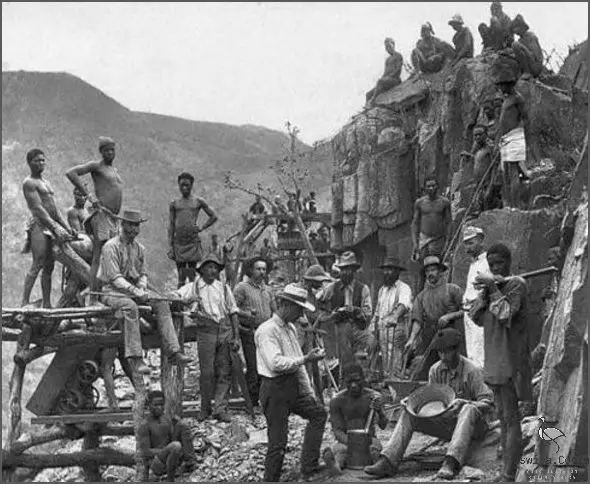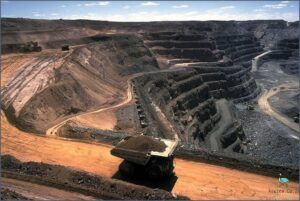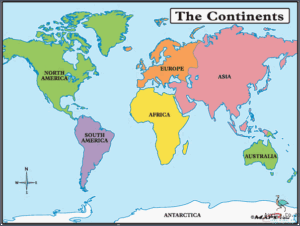
The first recorded discovery of gold on the Witwatersrand was made by Jan Gerrit Bantjes in June 1884, on the farm Vogelstruisfontein, and was followed soon thereafter, in September, by the Struben brothers who uncovered the Confidence Reef on the farm Wilgespruit, near present-day Roodepoort. However, these were minor finds and it was only when gold was discovered in 1886 in the area surrounding present-day Johannesburg that attention was really focused on the Witwatersrand as a potential gold-bearing area.
Contents
When Was Gold Discovered In South Africa
The discovery of gold in South Africa dates back to 1884 when gold was discovered on the Witwatersrand, near present-day Johannesburg. This discovery brought a large influx of immigrants from all over the world, eager to stake their claim in South Africa’s gold fields. Over the following years, gold production in South Africa increased steadily, and by 1898, South Africa had become the largest gold producer in the world. In the early 20th century, gold production in South Africa declined due to the depletion of easily accessible reserves. However, this decline was reversed in the 1970s when new technology allowed for the development of deeper and more profitable gold mines. Since then, gold production in South Africa has steadily increased and it remains one of the world’s leading gold producers to this day.
Pre-colonial history of gold in South Africa
The earliest evidence of gold mining in South Africa dates back to the pre-colonial era. The gold-rich areas of South Africa have long been known and coveted by the indigenous peoples of the region. In the late 1700s, gold prospectors from Europe began to explore the area and soon discovered the abundance of gold deposits in the region.
Throughout the 1800s, gold mining in South Africa grew exponentially and the country quickly became a major exporter of gold. The discovery of the Witwatersrand goldfields in 1886 led to an influx of foreign miners and investment, transforming South Africa into one of the world’s leading gold producers. By the beginning of the 20th century, South Africa was producing more than half of the world’s gold.
The history of gold mining in South Africa predates the colonial era. Archaeological evidence indicates that gold mining activities in the area began as early as the Iron Age, with evidence of smelting, refining and trading activities dating back to the 8th century AD. In addition to the Iron Age, a number of ancient cultures, including the Bantu, Sotho and Khoi Khoi, all had an active interest in gold mining.
The pre-colonial history of gold mining in South Africa is a fascinating and complex one. The gold-rich areas of the region were a source of great wealth and power for the indigenous peoples, and attracted the attention of European prospectors and investors in the late 1700s.
Gold mining in South Africa continues to be an important part of the country’s economy and culture today. Despite the challenges posed by the Covid-19 pandemic, gold production in South Africa continues to be strong and gold companies remain confident of the future of gold mining in the region.
The discovery of gold in the Witwatersrand region
The discovery of gold in the Witwatersrand region of South Africa has been one of the most momentous events in the history of the world. It is estimated that over 40% of all the gold ever mined on Earth has come from the Witwatersrand region, and it’s easy to understand why – the area is home to some of the richest gold deposits in the world.

The story of the discovery of gold in the Witwatersrand region starts in 1886, when an Australian prospector named George Harrison stumbled across a large gold-bearing reef in what is now the city of Johannesburg. Harrison and his partner, John Ruhan, quickly realized that they had stumbled across a massive gold deposit, and started to mine the reef.
Within a few years, the discovery of gold in the Witwatersrand region had created a gold rush, with prospectors flocking to the area from all over the world. By the turn of the century, the region had become the world’s premier gold-producing area, with the majority of the world’s gold coming from the Witwatersrand.
The discovery of gold in the Witwatersrand region brought about a massive change in the economy of South Africa and the region. The gold rush saw an influx of people, money and technology, and the region quickly became a major economic power. The gold industry also led to the development of infrastructure, such as roads and railways, which opened up the area to further development.
Today, the Witwatersrand region is still home to the world’s largest gold deposit, and is still a major source of gold for the world. The gold industry has also been a major contributor to the South African economy, and the discovery of gold in the Witwatersrand region is still regarded as one of the most significant events in the history of the world.
The impact of the discovery of gold in South Africa
The discovery of gold in South Africa in the late 19th century had a profound impact on the economic and social landscape of the nation. Gold was first discovered in the Transvaal region of South Africa in 1886, and soon thereafter, a massive gold rush ensued. Thousands of miners and prospectors from all over the world flocked to South Africa in search of the precious metal.
The impact of the discovery of gold was far-reaching, and it had a huge impact on the development of South Africa. For starters, it provided a massive influx of foreign capital, which was used to finance infrastructure projects, such as the construction of roads and railways. This allowed for better transportation and communication between the different regions of the country, which opened up new markets and opportunities for economic growth.
The gold rush also had an important impact on the labor force in South Africa. Mining companies needed a large number of workers to extract the gold, so they imported a large number of laborers from India and China. This influx of labor helped to create a more diverse population in South Africa and changed the social landscape of the country.
The discovery of gold also had a huge impact on the political landscape of South Africa. The new wealth generated by the gold mines created a new class of wealthy individuals who had the power to influence the politics of the country. This led to the establishment of new political parties, which eventually led to the establishment of the Union of South Africa in 1910.
The discovery of gold in South Africa has left behind a lasting legacy, and it is still felt today. It helped to create a more prosperous and diverse nation, and it also provided a huge boost to the economy. The gold rush also had a big impact on the political landscape, and it helped to shape the nation of South Africa as we know it today.
Conclusion
Gold was discovered in South Africa in 1886, and the country soon became the largest gold producer in the world. The discovery of gold in South Africa led to a gold rush, and thousands of miners flocked to the country to try to make their fortunes. However, gold mining was not always easy or safe, and many miners died in accidents or from diseases such as gold fever. Today, gold mining is still an important industry in South Africa, and the country is one of the leading gold producers in the world.



